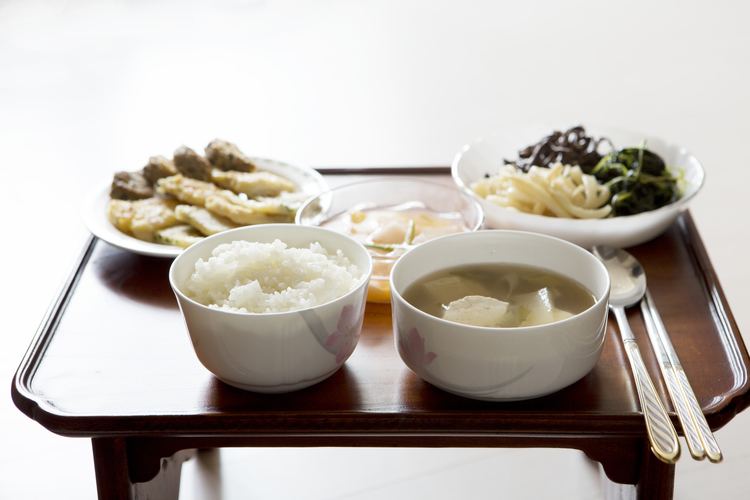 | ||
Korean Chinese Cuisine (Korean: 중화요리 Junghwa yori, hanja: 中華料理) is derived from traditional Chinese cuisine but it has been influenced by local ingredients in Korea. Due to geographical proximity, most Korean-Chinese dishes are derived from Northern styles of Chinese cuisine such as Beijing and Shandong cuisine. The cuisine developed in the port city of Incheon, where the majority of Korea's ethnic Chinese population historically lived. However, Chinese restaurants in Korea are unusual in that they are owned and run by Koreans, rather than ethnic Chinese. The latter development came in part due to the assimilation of the ethnic Chinese in Korea into the Korean culture as well as due to their outward migration due to legal discrimination they were subject to, especially under the Park Chung-hee administration. Consequently, the most authentic Korean Chinese cuisine can be found in centers of overseas Korean communities in the East Coast of the United States such as Queens and Manhattan in New York City; Palisades Park, Fort Lee, New Jersey and Koreatown, Los Angeles.
In South Korea there is an aspect of this cuisine which is unusual, in that home delivery is the main means through which it is put in front of diners. As such Korean Chinese cuisine is analogous to pizza delivery in the US or Indian take-away in the UK, and every South Korean urban household is served by no fewer than two such establishments. The cuisine also occupies the same economic position to the two a-fore mentioned analogues, in terms of relative pricing vis-a-vis other dining options. Expensive gourmet Chinese cuisine at upscale establishments dedicated to such is also popular in South Korea, but the cuisine served is mainland Chinese styles.
Korean-Chinese dishes
There are two primary Chinese menu items served in the majority of Korean Chinese restaurants in South Korea and elsewhere:
In addition, several other dishes are often served in Korean Chinese restaurants:
Dumplings are also served at Korean-Chinese restaurants, in most instances a pan-fried version that is a cross between a Japanese gyoza and a Peking ravioli in terms of style.
Koreans traditionally eat Chinese food with a side serving of danmuji (yellow pickled radish), and raw onion dipped in black bean paste. Kimchi, a staple Korean food, is also eaten with Chinese food. Dried red chili flakes are provided to season food alone or mixed with soy sauce.
